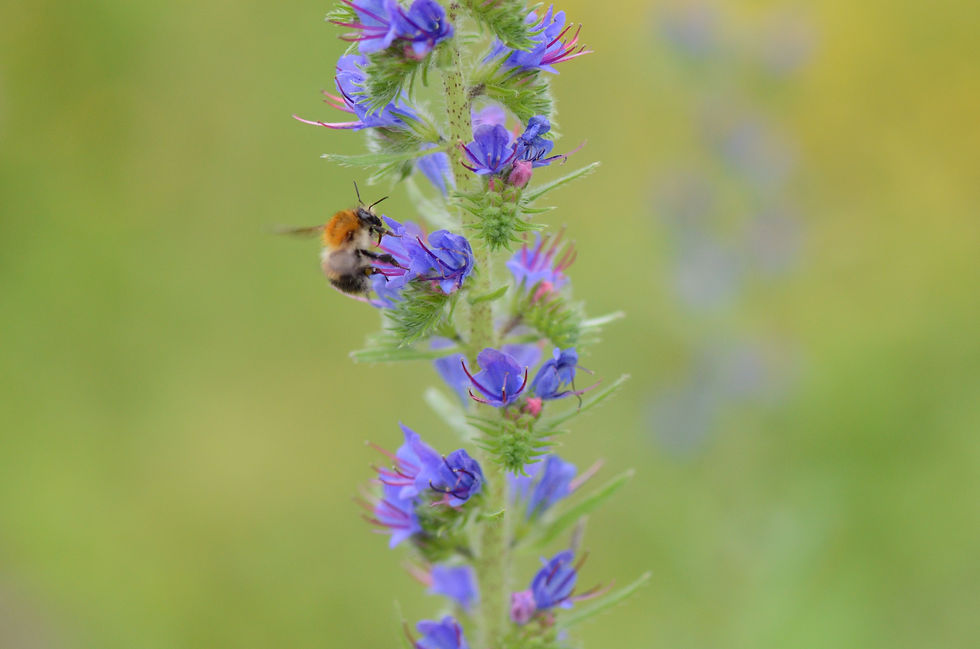Wings of Change: How Pollinators Keep Our World Blooming
- Isha Muppala
- Jul 31, 2024
- 3 min read

Pollinators are the unsung heroes of our natural world. These creatures—bees, butterflies, birds, bats, and even some small mammals—play a pivotal role in the reproduction of flowering plants, which are vital to both natural ecosystems and human agriculture. Despite their importance, pollinator populations around the globe are in decline.
The Importance of Pollinators
Pollinators are essential for the survival of ecosystems. They facilitate the reproduction of nearly 75% of the world’s flowering plants, which includes about 35% of global crop production. Without pollinators, many of the foods we take for granted—such as fruits, vegetables, nuts, and seeds—would become scarce and expensive. Beyond agriculture, pollinators help maintain the biodiversity of our forests, meadows, and grasslands, which in turn supports a wide range of wildlife. They are critical to the health of ecosystems, as they ensure the continuation of plant species that provide food and habitat for countless animals.
Threats to Pollinators
Despite their crucial role, pollinators are facing a number of threats that are causing their populations to dwindle. Habitat loss is one of the most significant challenges, as urbanization, agriculture, and deforestation destroy the natural landscapes that pollinators depend on. Pesticides, particularly neonicotinoids, are also a major threat, as they can be lethal to pollinators or disrupt their ability to forage and reproduce. Climate change adds another layer of danger, as shifting temperatures and weather patterns can alter the timing of plant flowering, disrupting the availability of food sources for pollinators. Additionally, diseases and parasites, such as the Varroa mite in bees, have had devastating effects on pollinator populations.
The Impact of Pollinator Decline
The decline of pollinators has far-reaching consequences. In agriculture, reduced pollination can lead to lower crop yields and higher food prices, which could exacerbate food insecurity worldwide. In natural ecosystems, the loss of pollinators can lead to a decline in plant diversity, which in turn affects the entire food chain. When plants fail to reproduce, animals that rely on them for food and shelter are also put at risk. This can lead to a decrease in biodiversity, making ecosystems more vulnerable to environmental changes and less resilient in the face of disturbances.
How We Can Help
Protecting pollinators is not only a responsibility but a necessity for ensuring the future health of our planet. There are several actions that individuals, communities, and governments can take to support pollinator populations:
Create Pollinator-Friendly Habitats: Planting a variety of native flowers that bloom at different times of the year can provide continuous food sources for pollinators. Gardens, parks, and urban green spaces can all serve as important habitats.
Reduce Pesticide Use: Opting for organic farming practices or using natural pest control methods can help reduce the harmful effects of pesticides on pollinators. In home gardens, consider using less toxic alternatives or adopting integrated pest management strategies.
Support Sustainable Agriculture: Choosing products that are grown using pollinator-friendly practices can encourage farmers to adopt methods that protect and support pollinator populations.
Educate and Raise Awareness: Spreading awareness about the importance of pollinators and the threats they face can inspire others to take action. Educational programs, community events, and social media campaigns can all contribute to a broader understanding and appreciation of these essential creatures.






Comments